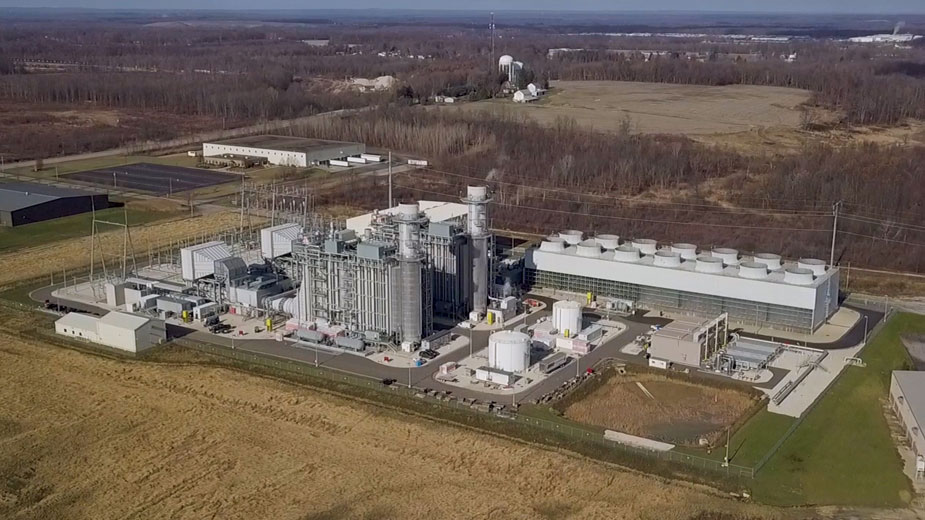Lordstown Energy Seeks Permit to Discharge Wastewater to Mud Creek
YOUNGSTOWN, Ohio — Members of the public will have a chance to learn and ask questions about a proposed permit that would allow Lordstown Energy Center to discharge processed wastewater to Mud Creek. Two public hearings are scheduled this month.
A virtual information session is set for 6 p.m. Jan. 13, during which the staff of the Ohio Environmental Protection Agency will give a brief presentation on the draft permit and respond to questions from the public.
An in-person public hearing on the draft permit will follow 6 p.m. Jan. 19 at the Lordstown Municipal Building. During that meeting, the OEPA will only accept comments on the record regarding the draft permit.
Lordstown Energy – a natural gas-fired combined cycle power generating plant – is proposing to construct a retention pond and pipeline connecting to Mud Creek. The proposed outfall would be near the intersection of Mud Creek and Hallock Young Road. The OEPA says it will consider technical, economic, social and environmental aspects of the project before issuing or denying the permit.
The draft permit is available at the OEPA website and can be viewed HERE. It specifies that Lordstown Energy is currently authorized to discharge process wastewater and domestic sewage to the local sewer collection system in the village of Lordstown, where it is sent for treatment to the Water Pollution Control Facility in Warren. According to the draft permit, process wastewater includes non-contact cooling water, multimedia filter backwash water and small discharges from emergency shower and eyewash stations.
Per the current service agreement, Lordstown Energy may discharge up to 1.3 million gallons per day of wastewater into the Lordstown sewer system. The power plant began operations in October 2018.
Lordstown Energy is proposing it continue to discharge domestic sewage under the current agreement, but would discharge the process wastewater from the cooling tower blowdown and site stormwater to Mud Creek. “Recent economic circumstances have resulted in its consideration of alternative discharge operations for its wastewater,” the draft permit states.
Lordstown Mayor Arno Hill has been vocally against the permit. In May 2019, the village increased the sewer user rate for Lordstown Energy to $3.89 per 1,000 gallons from $1.78, and made the rate retroactive to Jan. 1, 2018, Hill confirmed. He said the increase was a reflection of the city of Warren’s own increased rates that Lordstown has to pay.
“All Lordstown sewer, whether it’s the village or the Trumbull County portion of the sewers, it goes to Warren,” Hill said.
If the permit is approved, Hill is concerned that the additional discharge into Mud Creek could lead to flooding downstream, affecting residences in the area.
“We don’t want to be responsible for any flooding downstream,” Hill said. “The people downstream aren’t going to be calling the Lordstown Energy Center. They’re going to be calling the village of Lordstown.”
Hill says the village system capacity that was upgraded to accommodate the 1.3 million gallons daily from Lordstown Energy and reduced usage would impact the ability to keep the system purged and clean. The village estimated the system needs at least 150,000 to 200,000 gallons daily to keep the system functioning properly.
“If you don’t run a steady flow through the lines, you could have caking and you could have build up,” he said.
If the Ohio EPA grants the permit, Hill wants to ensure Lordstown Energy gives up access to that additional capacity so the village can use it to attract other commercial customers.
On Sept. 23, Lordstown Energy Center reported an “inadvertent discharge of non-contact cooling water” to Mud Creek, per a letter from Operations Director Robert Hughey to Allison Cycyk of the OEPA Northeast District Office Division of Surface Water. According to that document, an improper configuration of a temporary pumping/piping system to drain the cooling tower was incorrectly routed to its stormwater piping system, resulting in the pumping of some 765,000 gallons of cooling tower blowdown to the stormwater management pond.
Before it could be stopped, about 80%, or 612,000 gallons, of the cooling tower blowdown was released off-site to Mud Creek.
In a follow up letter dated Oct. 12, Hughey wrote Lordstown Energy was planning to conduct “a detailed root cause analysis to investigate the incident and ensure property mitigating measures (i.e. readily identifying markings on storm drain covers, stricter quality control measures requiring plant manager signature of review prior to manual pumping operations, etc.) are put into place to avoid a future occurrence.”
Participants who want handouts for the Jan. 13 virtual information session should email [email protected] to receive electronic copies the day of the public meeting. Also, those participating in the information session should register at least 15 minutes before the meeting begins. Registration is available online at GoToWebinar.com/register/3627195820369339660.
Written comments may be submitted during the public hearing or emailed to [email protected]. All comments received at the public hearing or via email by 5 p.m. Jan. 26, will be considered by Ohio EPA before final action on this proposal. Comments submitted by email should include the project name (Lordstown Energy Center) or the identification number (3IN00407*AD).
Copyright 2024 The Business Journal, Youngstown, Ohio.



